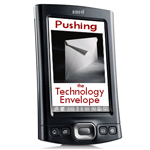 By definition, to integrate is to 'incorporate into a larger unit' or 'blend into a functioning or unified whole.' In terms of technology, integrating is trying to fit it in with that of an existing way of doing things. It is almost like a puzzle, making sure that the piece you are trying to fit into place belongs there. With the way our education system is set up, we are often missing pieces of the puzzle, or we just can't find the right way to turn them to make them fit!
By definition, to integrate is to 'incorporate into a larger unit' or 'blend into a functioning or unified whole.' In terms of technology, integrating is trying to fit it in with that of an existing way of doing things. It is almost like a puzzle, making sure that the piece you are trying to fit into place belongs there. With the way our education system is set up, we are often missing pieces of the puzzle, or we just can't find the right way to turn them to make them fit!What if we were able to embed technology instead of integrating it? What if we could start from the bottom up, with our technology skills, standards, and tools, and embed them from the start? Having technology as a special, or something that is done once a week or so, does not allow for students to see it's full potential, and does not become a meaning part of a classroom.
Let's work on embedding technology into our classroom...let's focus on treating technology as an integral part of education, not an extra part of education. What could our schools look like if we start embedding instead of integrating?
__________________________________
Photo Citation: http://flickr.com/photos/sporkwrapper/301136579/
